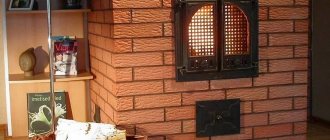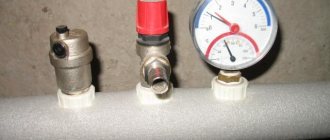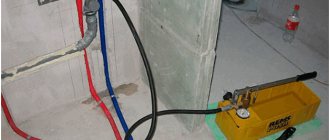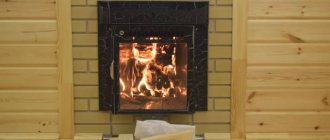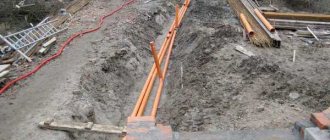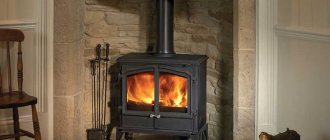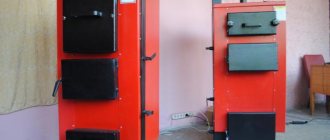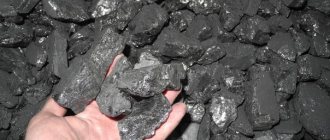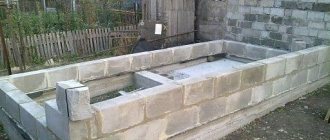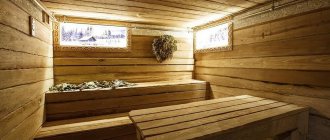Lighting a bath is a special art, without knowledge of which it is impossible to obtain a healing effect from bath procedures. For a person who has little idea how to heat a bathhouse, the temperature may be too low (and then the bathhouse will not warm up), or too high, and this is likely to cause harm to health in the form of heat stroke. We understand how the room is prepared, what kind of firewood is chosen, what kindling consists of what kindling.
Proper kindling is the result of a certain algorithm of actions Source banya-expert.com
Preparation
Before loading the first portion of firewood into the firebox, the room is tidied up, because cleanliness will increase comfort and make the bathing procedure truly useful. Cleaning includes the following simple steps:
- Garbage remaining from the previous visit is removed from all premises: leaves from brooms, soap, small litter, wood chips.
- Wet cleaning is carried out: all surfaces are washed, and benches are additionally treated with an antiseptic. It is important to let them dry completely; The process will speed up if you open the windows.
- If the stove design includes a water tank, fill it. It’s also worth taking care of a sufficient supply of cold water in advance (if you don’t have a full-fledged shower).
- The stove is prepared no less carefully: the ash is removed, the grate and vent are cleared of soot. Stones, if necessary, are also washed.
- Be sure to check the draft of the chimney: open the valve in the pipe, and bring a burning match into the firebox. The flame will show the air flow. If there is no draft, the chimney is cleaned until normal draft is restored to prevent smoke and carbon monoxide poisoning.
Prepare for going to the bathhouse in advance Source yandex.net
- Prepare materials for kindling: dry firewood (wet firewood will produce a lot of smoke), some paper, matches (gasoline and similar means for quick ignition are prohibited in the bathhouse for safety reasons). Find a place for firewood at a safe distance from the stove.
Fuel selection
When kindling, you can use firewood from different types of wood:
- Thuja, pine, spruce. They are inexpensive and burn out quickly. The main disadvantage of the fuel is the content of resins, which settle on the walls of the chimney and do not burn out.
- Birches. They flare up quickly, burn long and evenly. When burned, they release a pleasant fragrant aroma that fills the bathhouses. It is recommended to use fresh, dried wood.
- Duba. This breed has a high heat transfer rate. Prepared logs can be stored for a long time without loss of quality. Burns for a long time and heats evenly. The disadvantage is the high price.
- Acacias. High thermal conductivity. Provides uniform heating.
- Aspen, poplar, linden. They have low density and burn out quickly. Do not provide strong heat.
- Hornbeam. They have a high thermal conductivity. The flame is smokeless, the burning is long, even, the heat is strong.
A separate type of solid fuel that is gradually gaining popularity is pellets and briquettes. The first are granules that are made from sawdust by pressing. The latter are similar to bricks, made from sawdust of different sizes. The main advantage of these types of fuel is long burning and intense heat.
How to choose firewood
The question of how to properly heat a sauna is closely related to the choice of firewood, and there are many nuances here. The type of wood determines how long the combustion will be, what the heat transfer will be, and how evenly the walls will warm up. Equally important is the feel of the atmosphere; Bath connoisseurs know that firewood affects the quality of the heat, and “heavy” steam can cause discomfort in the sensations.
First of all, any coniferous wood is taken out of the bath procedures. The reason lies in the large amount of resin and essential oils. Because of it, pine or spruce logs burn quickly, producing a lot of smoke and soot, but little heat. Coniferous firewood gives off a unique aroma and sparks that fly out of the firebox and can cause big trouble.
The optimal humidity of firewood is no more than 20% Source hotel-a.ru
It is also worth refusing to try to light the stove with a board with traces of varnish, paint or impregnation. When burned, the entire periodic table will end up in the air, and inhaling it is unlikely to be beneficial to health. Rotten and rotten wood will provide little heat and leave behind an unpleasant odor.
It is customary for experienced amateurs to heat their bathhouses with hardwood firewood. Logs from the following types of trees are recognized:
- Birch. The best option: the wood is inexpensive, the heat is uniform and stable, and essential oils are released during combustion.
- Oak, hornbeam, ash. Dense wood burns for a long time, with high heat transfer, and releases beneficial essential oils. The age of the tree is important for comfort; the heat from old wood can be severe. Disadvantage of oak firewood: the wood is a valuable variety, so it is not cheap.
- Alder. It was once chosen to fire stoves in manorial estates for its hot fire, almost complete absence of smoke and soot, and for its unique delicate aroma. Alder firewood grown in a humid area may smoke and produce heavy heat.
Birch is considered the best wood for heating a bath Source prom.st
- Fruity. Apple and cherry wood burns evenly and produces light, aromatic steam, but the use of fruit wood is a pleasant exception rather than the rule.
- Linden, poplar. Logs are not used as main wood: porous wood burns quickly, gives little heat and does not have time to warm up the room.
- Aspen. Plays an important role at the end of the kindling: during combustion it does not produce soot, burns with little heat, but very energetically, burning soot in the chimney.
The supply of firewood from any wood must be kept well dried: wet firewood burns worse and smokes. The size of the logs is also important: thick ones will take too long to burn, thin ones will burn out quickly, leaving no heat.
See also: Catalog of companies that specialize in the design and construction of baths of any complexity
How long to heat the stove
Heating a sauna correctly is a complex science and all skills come only with your own experience. It is necessary to constantly maintain the fire in the sauna stove, making sure that the wood does not burn out at all. The combustion temperature in the furnace must be constantly maintained at a certain level.
If you have not heated the sauna for a long time, then you will have to heat it longer in order to thoroughly warm up the entire room. With regular use of the sauna kingdom, the time required to prepare the sauna takes much less.
There is simply no specific time for firing a stove! Everything is so individual! In winter, the bathhouse needs to be heated longer than in summer. A metal stove and a stone stove heat up and heat the sauna differently. The amount of time spent ultimately depends on how much water you heat and what the heart of the furnace is (stone backfill).
How to light a stove correctly
All ovens are different, and each requires an individual approach. The answer to the question of how to properly heat a sauna with wood with an iron stove is the following procedure:
- The firebox and ash pan are cleaned (if this has not been done before) of old ash.
- For kindling you need draft in the chimney. Make sure that the ash pan door is closed and the chimney damper is fully open.
- To prevent heat from being wasted, the door to the steam room is closed.
At the moment of kindling, the view is opened Source dartshouse.ru
- Several thin logs with gaps are placed on the grate (grid). Between them there is a material that is highly flammable. This can be wood chips, thin shavings, newsprint, bark (preferably birch). It should be so that the paper and wood chips are inside.
- Use matches to set the paper on fire. When it flares up, close the firebox door to keep out the smoke. The blower is opened slightly, it provides a flow of oxygen to the flame.
- After 5-10 minutes you should hear a characteristic roar of flame; this means that the kindling was successful and you can add firewood. If an even sound is not heard, the kindling is repeated in the same sequence.
- Warning: It is strictly forbidden to use flammable liquids for ignition. The desire to heat the bathhouse quickly by splashing gasoline can easily result in a burn or fire.
- After the first flare has flared up, cover the vent a little, but open the valve to the water tank. The container should not be empty, so the volume of water inside will have to be constantly monitored.
Good draft is important for removing combustion products Source sense-life.com
Preparing the steam room for bath procedures
To start heating the bathhouse, you need to clean it thoroughly. We don't mean to say that everyone leaves a mess behind.
In a bathhouse, as in an auxiliary and non-residential premises, many things are left for storage, so putting things in order means removing from the room everything unnecessary and not related to bath procedures.
Check the floors of the room for wood chips left over from the firewood after the last visit to the steam room. The wood chips themselves are not harmful, but they can cause injury.
Please ensure that there are no soap residues on the floor. When water hits a soapy area, it turns it into a skating rink
How to properly stack firewood
Compared to a brick stove, an iron stove warms up much faster, however, it consumes more firewood and is less able to maintain a constant temperature. These features must be remembered when servicing a metal unit if you want to properly heat a bathhouse with an iron stove. After laying firewood, within 15-20 minutes it reaches the optimal level of operation, for which you need to perform the following steps:
- After the flame has flared up, prepare the main filling. The contents of the firebox are leveled with a poker, and a second portion of firewood is laid on top. You cannot fill the firebox to capacity: there should be gaps between the logs for air circulation, and a gap of 20-25 cm should be left between the firewood and the ceiling of the firebox.
They leave empty space in the firebox Source baurum.ru
- Make sure that the logs are not close to the door; their place is within the grate and away from the chimney. When the first batch of firewood burns out, add the next batch.
The combustion process lasts 3-6 hours, which depends on the design of the stove, the season, the characteristics of the firewood and the volume of the room. If they want to increase heat transfer, the firebox door is opened slightly after an hour and a half. The contents of the firebox are periodically stirred with a poker so that the wood burns more evenly.
Upon completion of the kindling, the temperature in the bath should rise to a comfortable 60°C. At this moment, you need to close the valves, pour water over the stones (to get rid of soot), and open the doors and windows. After express ventilation, the bathhouse is allowed to warm up for 1.5-2 hours, after which they begin bathing procedures, not forgetting to steam the brooms.
What temperature should be in the steam room
After the firewood of the last stack has burned out and the surface has become grayish, when the coals move, the flames are red in color, without blue flashes (carbon dioxide has not yet completely escaped, if blue tongues appear), which means you can close the half-door and firebox, open the valves.
By this time, the stones should already be well heated and the water should boil (the temperature in the steam room should rise to +50-+60°C).
The next step is to ventilate the bathhouse. Open everything that can be opened, rinse the entire steam compartment and stones with boiling water. After ventilation, everything is closed, leaving only a window in the steam compartment. This allows you to heat the bath evenly in an hour and a half. Then close the window after this time. The steam room is ready and you can steam to your heart's content.
Briefly about the main thing
When lighting a bath, certain rules must be followed; this will make the process safe, the result useful, and you will gain a supply of energy. To bring the steam room into the desired condition, every step is important, from choosing firewood to cleaning the room, preparing the stove and lighting it. To maintain the temperature at a comfortable level, you need to monitor the stove: periodically add logs, reduce the draft in time by closing the dampers. It is convenient to control temperature and humidity using a thermometer and hygrometer.
Some useful tips
The following tips will help you heat your sauna as efficiently as possible:
- The distance when laying logs should be at least 5 mm. Thanks to this, the air will circulate freely, and the fire will definitely not go out.
- To make the steam drier and hotter, you can add water to the space between the stones.
- It is better to spray water onto the stones using fan sprays. This will cover the maximum possible area.
- During the lighting process, it is better to monitor the color of the fire. If it turns blue-yellow, this indicates the presence of carbon monoxide. In this case, the furnace valve is not closed until the carbon monoxide is completely gone. The smoke exhaust pipe valve is also kept slightly open.
- To save wood, you can close the pipe valve. But it is very important to ensure that smoke and carbon monoxide do not enter the steam room. If you use this method, it is important to let the bath air for some time afterwards.
- If the stones have acquired a crimson color and a sharp pop occurs when water is supplied, everything has been done correctly. But if evaporation is accompanied by hissing, the temperature inside the oven is too low and there is no need to add heat yet.
What kind of coal is suitable?
There are different types of fuel. Let's look at them in more detail:
- Lignite. The youngest species, characterized by high friability. It has a fibrous structure. A common fuel in power plants and factories. It is used infrequently for heating homes, as it does not heat a conventional stove properly.
- Brown. This fuel consists of peat and carbon. It has a low combustion temperature due to the large amount of water and other impurities. Can be used as local fuel.
- Coal . It has a high combustion temperature due to the large amount of carbon in the composition. Has a high heat of combustion.
- Anthracite. Contains up to 95 percent carbon. It has the highest degree of combustion heat. One disadvantage is poor ignition.
For heating stoves in households, coal and anthracite are usually used, as they have greater heat transfer. This type of coal for heating a home will be required several times less than brown coal or firewood. The only drawback is poor ignition.
This problem can be solved with the help of firewood: first put logs in the firebox, and after they burn out, add anthracite.
Why do you need the first furnace fire and what will happen if you don’t do it?
When I bought a new stove, specially selected according to the parameters for my large room, I thought that it could be directly mounted on the foundation.
However, in the stove manufacturer’s passport it was written that it must first be heated outside twice.
Why is this type of heating needed:
- In production, the metal is not processed for finishing, and scale and traces of technical oils remain on it. If you heat it right away in the bathhouse, all these odors will remain in the room for a long time.
- The stove has additional elements: an internal heater, a tank for heating water, an anti-infrared casing, a heat-resistant door with glass. All of these products may not work properly when the temperature rises; in this case, the manufacturer will simply replace the stove under warranty. If you install it, then if problems are discovered, it will be much more difficult to replace the stove, and some manufacturers may simply refuse to replace it.
- There may be internal problems with the passage of combustible gases, which can lead to the fact that the gases are discharged into the pipe in an insufficient volume and such a stove must also be replaced by the manufacturer.
